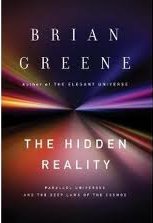|
பதிவுகள்
|

பதிவுகள் சஞ்சிகை உலகின் பல்வேறு நாடுகள் பலவற்றில்
வாழும் தமிழ் மக்களால் வாசிக்கப்பட்டு வருகிறது. உங்கள் வியாபாரத்தை
சர்வதேசமயமாக்க பதிவுகளில் விளம்பரம் செய்யுங்கள். நியாயமான விளம்பரக் கட்டணம்.
விபரங்களுக்கு ngiri2704@rogers.com
என்னும் மின்னஞ்சல் முகவரிக்கு எழுதுங்கள்.
பதிவுகளில் வெளியாகும் விளம்பரங்களுக்கு
விளம்பரதாரர்களே பொறுப்பு. பதிவுகள் எந்த வகையிலும் பொறுப்பு அல்ல. வெளியாகும்
ஆக்கங்களை அனைத்துக்கும் அவற்றை ஆக்கியவர்களே பொறுப்பு. பதிவுகளல்ல. அவற்றில்
தெரிவிக்கப்படும் கருத்துகள் பதிவுகளின்கருத்துகளாக இருக்க வேண்டுமென்பதில்லை.
|
|
மணமக்கள்! |
|
|
தமிழ்
எழுத்தாளர்களே!..
|
|
அன்பான இணைய வாசகர்களே! 'பதிவுகள்' பற்றிய உங்கள் கருத்துகளை
வரவேற்கின்றோம். தாராளமாக எழுதி அனுப்புங்கள். 'பதிவுகளின் வெற்றி உங்கள்
ஆதரவிலேயே தங்கியுள்ளது. உங்கள் கருத்துகள் ப் பகுதியில் இணைய வாசகர்கள் நன்மை
கருதி பிரசுரிக்கப்படும். பதிவுகளிற்கு ஆக்கங்கள் அனுப்ப விரும்புவர்கள்
யூனிகோட் தமிழ் எழுத்தைப் பாவித்து மின்னஞ்சல்
ngiri2704@rogers.com
மூலம் அனுப்பி வைக்கவும். தபால் மூலம் வரும் ஆக்கங்கள் ஏற்றுக் கொள்ளப்
படமாட்டாதென்பதை வருத்தத்துடன் தெரிவித்துக் கொள்கின்றோம். மேலும் பதிவுக'ளிற்கு
ஆக்கங்கள் அனுப்புவோர் தங்களது சரியான மின்னஞ்சல் முகவரியினைக் குறிப்பிட்டு
அனுப்ப வேண்டும். முகவரி பிழையாகவிருக்கும் பட்சத்தில் ஆக்கங்கள் பிரசுரத்திற்கு
ஏற்றுக் கொள்ளப் படமாட்டாதென்பதை அறியத் தருகின்றோம். 'பதிவுக'ளின்
நோக்கங்களிலொன்று இணையத்தமிழை வளர்ப்பது. தமிழ் எழுத்துகளைப் பாவித்துப்
படைப்புகளை பதிவு செய்து மின்னஞ்சல் மூலம் அனுப்புவது அதற்கு முதற்படிதான். அதே
சமயம் அவ்வாறு அனுப்புவதன் மூலம் கணிணியின் பயனை, இணையத்தின் பயனை அனுப்புவர்
மட்டுமல்ல ஆசிரியரும் அடைந்து கொள்ள முடிகின்றது. 'பதிவுக'ளின் நிகழ்வுகள்
பகுதியில் தங்களது அமைப்புகள் அல்லது சங்கங்களின் விழாக்கள் போன்ற விபரங்களைப்
பதிவு செய்து கொள்ள விரும்புகின்றவர்கள் மின்னஞ்சல் மூலம் அல்லது
மேற்குறிப்பிடப்பட்ட முகவரிக்குக் கடிதங்கள் எழுதுவதன் மூலம் பதிவு செய்து
கொள்ளலாம். |
|
|
Science |
http://www.thestar.com ; Fri Feb 4 2011
In another universe, this article is about comedy
By Author Brian Greene - Peter Calamai -
  Is there another universe in which this article would have been a
snap to write? Or where most of the people reading it would
understand quantum mechanics and the
general theory of relativity? Could our entire awareness unknowingly
be no more than a simulation, as in The Matrix? Or the holographic
projections through a far
distant surface that encloses our universe? Maybe, says cosmologist
Brian Greene. Also possible, however, are other universes barren of
biological life. Or even no
universes other than our own, which could be either finite or
infinite in extent. Such multiple probabilities are the core message
of Green's new book, The Hidden
Reality, consisting of 322 pages of challenging prose aimed at
curious intellectuals, plus 30 pages of footnotes unsuitable for
anyone lacking a university science
degree. Make that an advanced university science degree. Is there another universe in which this article would have been a
snap to write? Or where most of the people reading it would
understand quantum mechanics and the
general theory of relativity? Could our entire awareness unknowingly
be no more than a simulation, as in The Matrix? Or the holographic
projections through a far
distant surface that encloses our universe? Maybe, says cosmologist
Brian Greene. Also possible, however, are other universes barren of
biological life. Or even no
universes other than our own, which could be either finite or
infinite in extent. Such multiple probabilities are the core message
of Green's new book, The Hidden
Reality, consisting of 322 pages of challenging prose aimed at
curious intellectuals, plus 30 pages of footnotes unsuitable for
anyone lacking a university science
degree. Make that an advanced university science degree.
With that proviso, The Hidden Reality is an accessible and
surprisingly witty handbook to parallel universes, the multiverse
concept that the Columbia University
professor is the latest to try to transplant from the realm of
science fiction into the terrain of acceptable scientific
hypothesis. Perhaps more importantly, the book will
also reveal to the general public that the concept of parallel
universes has given new life to the ages-old debate about what
exactly constitutes science and, crucially,
what kind of evidence is required to take seriously a hypothesis
that shatters existing paradigms.
“The book is not a multiverse manifesto,” the author said in an
interview.
“It's taking a critical look at an exciting development in physics
and pointing out which are the strong features and the weak
features.”
That exciting development is that theorists working in rarefied
branches of cosmology like dark energy are more and more finding
their mathematical investigations are
pointing to the possible existence of some alternate universe, or
more commonly, universes.
Greene canvasses eight serious possibilities, starting with the
venerable many-worlds theory or quantum multiverse, which proposes
that all of the histories of our
world possible under quantum mechanics are present in other
universes. Thus the universe where this article was a snap to write,
and also to read.
In addition there is the inflationary multiverse, where the
as-yet-unproven antigravity force known as inflation is responsible
for the continuous creation of new
universes; Greene's own specialty, string theory, yields a
multiverse where individual universes resemble floating slices of
bread, called branes; strings plus inflation
produces bubble universes; and that still leaves us with the
quilted, cyclic, holographic and simulated multiverses.
A longtime staple of science fiction, the contradictory idea that
our universe may not actually be universal gained some scientific
legitimacy as far back as 1988 when
Stephen Hawking mused about “baby universes” being born when matter
was ejected from black holes.
 The multiverse concept has recently broken free of academic journals
and symposia into books by popularizers of science. First came
Michio Kaku's Parallel Worlds
in 2004, followed by Leonard Susskind's The Cosmic Landscape,
Alexander Vilenkin's Many Worlds in One, Sean Carroll's From
Eternity to Here, John Gribbin's
In Search of the Multiverse, Hawking and Leonard Mlodinow's The
Grand Design, Steven Manly's Visions of the Multiverse and, due next
month, The Book of
Universes from John Barrow, a Cambridge cosmologist. No doubt a TV
series will soon appear, since science is as prone to fads as other
disciplines. The multiverse concept has recently broken free of academic journals
and symposia into books by popularizers of science. First came
Michio Kaku's Parallel Worlds
in 2004, followed by Leonard Susskind's The Cosmic Landscape,
Alexander Vilenkin's Many Worlds in One, Sean Carroll's From
Eternity to Here, John Gribbin's
In Search of the Multiverse, Hawking and Leonard Mlodinow's The
Grand Design, Steven Manly's Visions of the Multiverse and, due next
month, The Book of
Universes from John Barrow, a Cambridge cosmologist. No doubt a TV
series will soon appear, since science is as prone to fads as other
disciplines.
Greene includes most of these earlier volumes in his list of further
reading. But not surprisingly, he rejects the suggestion that the
multiverse is the latest in a long history
of fads or bizarre fantasies with which scientists have deluded
themselves, such as phrenology (interpreting a person's character
through skull bumps), the luminiferous
ether that supposedly filled the vacuum of space or cold fusion
(reproducing the nuclear reaction of the sun at room temperature.)
“Progress in science often makes you rethink things that you thought
you understood,” he said. “This is not just a bunch of physicists
letting their imaginations run too
wild. It's not as if the average physicist accepts this idea. Some
do, some don't.”
In fact, as Greene records in his book, some of the world's leading
theoretical physicists strongly reject the concept of parallel
universes, such as Nobel physics
laureate David Gross and Lee Smolin of the Perimeter Institute in
Waterloo.
“Many see these developments as a battleground for the very soul of
science,” Greene writes.
And indeed just last week on his Scientific American blog the
prominent science popularizer John Horgan attacked multiverse
theories as “not only unscientific but
also immoral,” saying:
“First, at a time when we desperately need science to help us solve
our problems, it's irresponsible for scientists as prominent as
Greene to show such a blithe
disregard for basic standards of evidence. Second, like religious
visions of paradise, multiverses represent an escapist distraction
from our world.”
Behind such impassioned opposition is a fundamental disagreement
about the modern application of the time-honoured scientific method.
This is traditionally
described as searching for patterns in the workings of the universe,
demonstrating how such patterns reveal the underlying laws of nature
and testing these supposed
laws by making predictions — hypotheses — that can be verified or
refuted through experiment and observation.
People whose exposure to science ended in Grade 11 often don't
appreciate that to be taken seriously a hypothesis must be
“falsifiable,” meaning there must be some
doable experiment whose outcome could disprove the hypothesis.
That's why almost all serious scientists reject the idea of
“intelligent design.”
Similarly, many scientists object that parallel universes are
nontestable and nonfalsifiable proposals which refer to realms we
cannot access. Therefore, they cannot
belong to the accepted world of science as traditionally defined.
Greene devotes the bulk of The Hidden Reality to attempting to
demonstrate that the notion of parallel universes warrants
legitimate scientific consideration, on the
grounds that multiverse theories might provide fresh insights into
some of the intractable problems facing physics.
He is hampered in this goal by the fact that — as he acknowledges —
likely fewer than five per cent of North Americans have even a
nodding acquaintance with
either quantum mechanics or the general theory of relativity, even
though both have been accepted by science since the 1930s. Yet
grasping the basics of both is
essential to appreciating the arguments for taking seriously the
concept of parallel universes. The result is that much of the book
has to be devoted to what amounts to
remedial education.
This is not so much eat-your-peas reading as it sounds, since Greene
is immensely gifted at finding apt and colourful everyday analogies
for the arcane byways of
theoretical physics. You'll have to find out for yourself why black
holes resemble the bald performers of the Blue Man Group or a
Pringles chip illustrates constant
negative curvature.
And I doubt if any other multiverse popularizers could have gone
toe-to-toe with satirist Stephen Colbert on television as Greene did
recently, leading to this last
exchange:
Greene: “You are a bag of particles governed by the laws of
physics.”
Colbert: (long pause) “That is a great pickup line.”
Peter Calamai is the Star's former science reporter. He graduated in
physics from McMaster University back in the days when
undergraduates weren't taught about
quantum mechanics, much less parallel universes.
Many see these developments as a battleground for the very soul of
science
Courtesy:
http://www.thestar.com/news/insight/article/933754--in-another-universe-this-article-is-about-comedy |
|
|
|

|
|
©
காப்புரிமை 2000-2011 Pathivukal.COM. Maintained By:
Infowhiz Systems Inc.. Pathivukal is a member of
the National Ethnic
Press and Media Council Of
Canada .
முகப்பு||Disclaimer|வ.ந,கிரிதரன்
|
|

